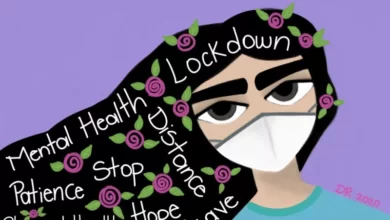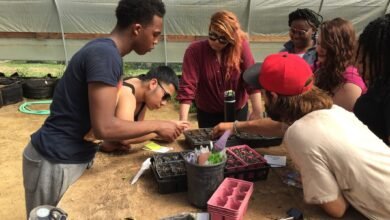The Impact of Bilingual Education on Cognitive Development and Academic Success

Introduction
Bilingual education is an approach that involves teaching students academic content in two languages. It has gained significant attention in recent years due to its potential impact on cognitive development and academic success. In this article, we will explore the various aspects of bilingual education and how it influences cognitive abilities and academic achievement.
Definition of Bilingual Education
Bilingual education refers to an educational approach that integrates the teaching of academic subjects in two languages. It aims to develop students’ proficiency in both languages while ensuring they acquire knowledge in different subjects effectively. Bilingual education programs can vary, with some focusing on partial language immersion and others employing a dual-language instructional model.
Cognitive Development
Benefits of Bilingualism
Bilingualism offers several cognitive advantages to individuals. Research suggests that bilingual individuals exhibit enhanced cognitive flexibility, which is the ability to switch between tasks and think creatively. They have been found to demonstrate better problem-solving skills, as bilingualism requires constantly navigating between two languages and activating the appropriate linguistic structures.
Cognitive Flexibility
Bilingual education promotes cognitive flexibility, allowing students to adapt to changing environments and circumstances. By regularly switching between languages, students develop a heightened capacity to think critically, make connections, and solve problems from multiple perspectives.
Enhanced Problem-Solving Skills
Bilingual individuals often demonstrate advanced problem-solving abilities. Their experience of processing information and interacting with different language systems enhances their analytical and logical thinking skills. This advantage extends to academic contexts, where bilingual students are often better equipped to tackle complex tasks and overcome obstacles.
Academic Success
Language Proficiency
One of the key outcomes of bilingual education is the development of strong language proficiency in both languages. Bilingual students become fluent speakers, readers, and writers in multiple languages, which can significantly benefit their academic pursuits. Proficiency in more than one language opens up broader opportunities for communication and access to diverse cultural resources.
Cultural Understanding
Bilingual education fosters cultural understanding and appreciation among students. By learning in two languages, students gain insights into different cultures, traditions, and perspectives. This exposure promotes empathy, tolerance, and cultural competence, allowing students to engage more effectively in multicultural environments.
Academic Achievement
Research indicates that bilingual students often achieve higher academic outcomes compared to their monolingual counterparts. Bilingual education enhances students’ cognitive abilities, linguistic skills, and overall academic readiness. Studies have shown that bilingual students consistently perform well across various subjects and standardized tests.
Social and Emotional Benefits
Increased Empathy
Bilingual education has a positive influence on social-emotional development. Bilingual students are often more empathetic towards others, as they have experienced different linguistic and cultural perspectives. Being exposed to different languages and cultures allows them to understand and appreciate diverse experiences, fostering empathy and compassion.
Cultural Competence
Bilingual education promotes cultural competence, which is the ability to interact effectively with people from different cultural backgrounds. By learning multiple languages, students gain a deeper understanding of cultural nuances, traditions, and values. This understanding helps them navigate multicultural settings with sensitivity and respect.
Challenges and Considerations
While bilingual education offers numerous benefits, there are also challenges and considerations to be mindful of.
Language Dominance
In bilingual education, students may develop a language preference or dominance, where one language becomes more dominant than the other. It is important for educators and parents to ensure balanced language development and provide support to strengthen proficiency in both languages.
Educational Resources
Implementing bilingual education requires adequate resources, including qualified teachers, instructional materials, and curriculum development. Schools and educational institutions need to invest in these resources to create effective bilingual programs that deliver optimal results.
Teacher Training
To successfully implement bilingual education, teachers need specialized training to effectively teach academic content in two languages. Professional development programs and ongoing support are crucial for educators to develop the necessary skills and strategies for bilingual instruction.
Best Practices and Strategies
To maximize the benefits of bilingual education, several best practices and strategies can be implemented.
Dual-Language Programs
Dual-language programs aim to provide instruction in both languages throughout the curriculum. These programs ensure balanced exposure to both languages, allowing students to develop proficiency in both academic and everyday language skills.
Immersion Programs
Immersion programs immerse students in one language while gradually introducing the second language. This approach encourages students to gradually become bilingual by integrating language learning into various subjects and classroom activities.
Supportive School Environment
Creating a supportive school environment that values and celebrates linguistic and cultural diversity is essential for the success of bilingual education. Encouraging cross-cultural interactions, organizing multicultural events, and providing resources that reflect diverse perspectives help foster an inclusive and supportive atmosphere.
Case Studies and Research Findings
Numerous case studies and research findings support the positive impact of bilingual education on cognitive development and academic success. For instance, studies have shown that bilingual students demonstrate higher levels of cognitive flexibility, problem-solving skills, and academic achievement compared to their monolingual peers.
Researchers have also found that bilingual education contributes to the preservation of heritage languages and cultural identities, promoting a sense of pride and belonging among students.



